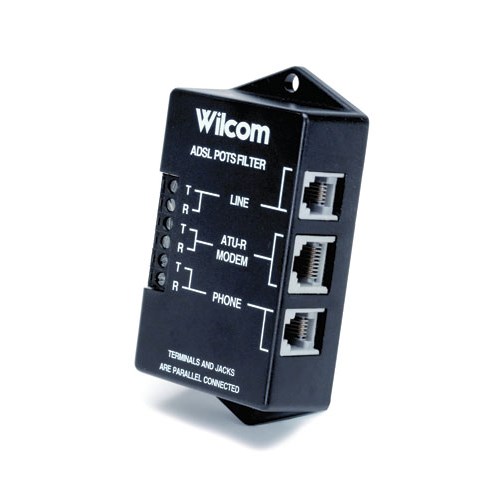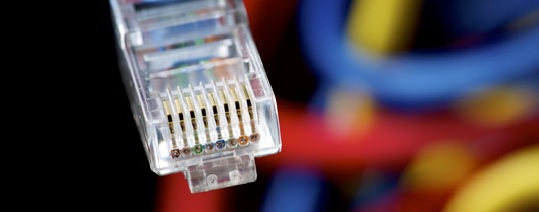
Wilcom Wall-mount POTS Splitter/w RJ-11 Jack
PS-15S-01
- The PS-15 ADSL Master POTS Splitter is compatible with all ADSL coding schemes
- Meets ANSI T1.413 and G.992.1 - E.2
- RJ Jacks and Terminal Block
- Passive circuitry for continuous phone service in the event of an AC power failure
- The compact ADSL Master POTS Splitter can be screwed in place or two-sided adhesive tape can be used for mounting the unit to the desired location
- Full bandwidth allocation as compared to a "micro-filter

1 800 204 0555

Email Us

Visiting Us
The PS-15 ADSL2+ Wall-mount POTS Splitter is a passive lowpass filter designed to provide POTS service in concert with ADSL technology. The device blocks high frequency (20kHz- >2.2MHz) energy from interfering with POTS equipment. The PS-15 employs a low-pass filter for standard voicegrade lines.
The PS-15 is designed to be mounted inside the customer premises near where the phone service enters the building. Two types of connection options are supported by the PS-15 splitter; a standard 6 pole terminal block with screws or RJ jacks. This allows the installer to simply connect the existing premise wiring to the PHONE jack or associated terminals on the splitter, and have POTS service up and running within minutes without expensive and timeconsuming rewiring. An RJ-45 jack or associated terminals connect directly to the ATU-R/MODEM equipment with data-grade cabling.
- Maximum xDSL Bandwidth :2.2 MHz - ADSL2+
- Maximum Bitrate :24 Mbps
- Corner Frequency :7 kHz
- Insertion Loss :(1kHz) < 0.25 dB
- 30kHz Attenuation :> 65 dB
- Attenuation Distortion (0.2kHz-3.4kHz) :< 0.25 dB
- Delay Distortion < 50 μS:
- Return Loss (600+2.16μF, typical): ERL +27 dB SRL-LO +18 dB SRL-HI +20 dB
- DC Resistance: < 20 Ohms
- Longitudinal Balance: > 70 dB
- Maximum Loop Current 1:00 mA
- Acceptable Wire Gauge (IDC): 19-26 AWG
- Jacks : RJ-11 type,gold plated
- Dimensions (HWD) :3.9 x 2.1 x 1.0”
- Temperature (operating & storage) :-40°C to +85°C
- Connections: Line, Modem & Phone RJ-11 jacks and terminal block





